#like huge swaths of it. by this park i help maintain in particular. which is fucking depressing bc i know theyre just going to build more
Explore tagged Tumblr posts
Text
theyre knocking down a bunch more forest around me and its bumming me out so much tbh. this place looked way different when i was a kid
#like huge swaths of it. by this park i help maintain in particular. which is fucking depressing bc i know theyre just going to build more#overpriced housing for city ppl trying to Go To The Mountains or whatever even tho they r destroying them to do that 😬#& im just going to have to continue rotting watching cost of living go up forever
5 notes
·
View notes
Text
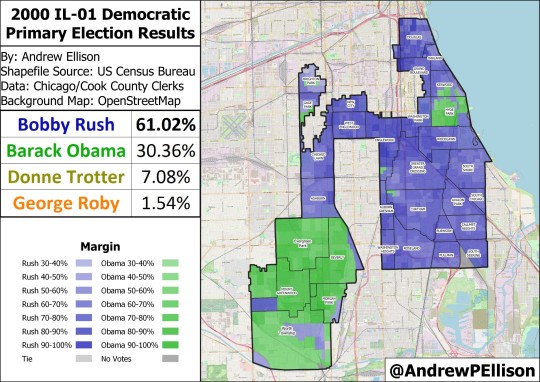
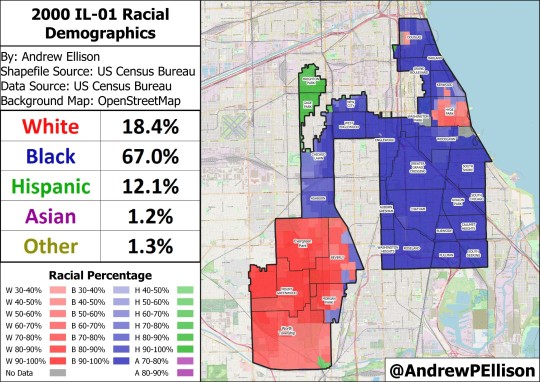
Barack Obama's 2000 primary run against Bobby Rush for Illinois's first congressional district was the only race he ever lost.
Although Obama won the Hyde Park precincts around the University of Chicago and the white suburbs around Evergreen Park and Mount Greenwood, Representative Rush dominated in the Black precincts in this majority-Black district on Chicago's South Side.
“Nobody sent me,” Obama had said at his campaign kickoff, on September 26, 1999. “I’m not part of some long-standing political organization. I have no fancy sponsors. I’m not even from Chicago." The primary results underlined that.
As Ryan Lizza later reported, the results made Obama rethink some things:
Obama learned the exact nature of his appeal, as well as his handicaps. Unlike Obama’s State Senate district, where the University of Chicago and the multicultural Hyde Park produced most of the votes, Rush’s congressional district extended deep into black neighborhoods where Obama was unknown. His academic background was a burden, too. Will Burns explained, “Even though the University of Chicago is one of the largest employers on the South Side of Chicago, it is seen by some, particularly black nationalists, as a bastion of white political power, as a huge entity that doesn’t take into account the interests of the community, that doesn’t have a full democratic partnership with the community, and does what it wants to the community in maintaining clear boundaries about where black people are. It’s seen as an expansive force, trying to expand into Bronzeville and into Woodlawn”—historically black neighborhoods adjacent to Hyde Park—“and put poor blacks out of the area. The University of Chicago is not a brand that helps you if you’re trying to get votes on the South Side of Chicago.”
Obama’s fund-raising success and his professional networks were also viewed with suspicion. Chicago is still a city of villages, and Obama was adept at gliding back and forth between the South Side, where he campaigned for votes, and the wealthy Gold Coast, the lakefront neighborhood of high-rise condominiums and deluxe shopping, where he raised money. One day in Hyde Park, I mentioned the name Bettylu Saltzman (the Project Vote supporter and daughter of a Bulls owner) to Lois Friedberg-Dobry (the South Side operator). “I don’t run in those circles,” she said. Later, over lunch with Saltzman at a café in a gourmet supermarket on the Gold Coast, I mentioned the Dobrys and Obama’s Independent Voters of Illinois friends, and she said, “You know, the North Side and the South Side of Chicago—it’s like two different worlds.”
A South Side operator named Al Kindle, a large man with a booming voice, was a field operator for Obama’s race against Rush. He had helped elect Harold Washington, and he saw Obama’s congressional campaign from the street level. We met one evening at Calypso Café, a Caribbean restaurant that Obama has said is his favorite place to eat in Hyde Park, and Kindle described some of the worst moments in the campaign. “The accusations were that Obama was sent here and owned by the Jews,” Kindle said. “That he was here to steal the black vote and steal black land and that he was represented by the—as they were called—‘the white man.’ And that Obama wasn’t black enough and didn’t know the black experience, the black community. It was quite deafening in terms of how they went after Alderman Preckwinkle and myself. People would say, ‘Oh, Kindle, man, we trust you, you being fooled. Obama’s got you fooled.’ And some people called me a traitor.”.
The loss taught Obama a great deal about the components of his natural coalition. According to Dan Shomon, the first poll that Obama conducted revealed that the demographic he could win over most easily was white voters. Obama, who hadn’t shown any particular gift for oratory in the race, now learned to shed his stiff approach to campaigning—described by Preckwinkle as that of an “arrogant academic.” Mikva told me, “The first time I heard him talk to a black church, he was very professorial, more so even than he was in the white community. There was no joking, no self-deprecation, no style. It didn’t go over well at all.”
But, as he had in his 1996 campaign, Obama had attracted a young and zealous corps of campaign workers. “I remember one of the candidates in the race used to talk about how crazed our volunteers were, because they were passionate, energized,” Will Burns said. “You’d come by the office on Eighty-seventh Street and there’d be a bunch of guys with no teeth waiting to get their next Old Grand-dad and then these Shiraz-drinking, Nation-reading, T.N.R.-quoting young black folk. It was a random-ass mix. It was beautiful, though. When I see the crowds now, they’re very reminiscent of what was happening then.”
Emil Jones told me that, after 2000, Obama moved decisively away from being pigeonholed as an inner-city pol. During one debate with Rush, he noted that he and the other candidates were all “progressive, urban Democrats.” Even though he lost, that primary taught him that he might be something more than that. “He learned that for Barack Obama it was not the type of district that he was well suited for,” Jones said. “The type of campaign that he had to run to win that district is not Barack Obama. It was a predominantly African-American district. It was a district where you had to campaign solely on those issues. And Barack did not campaign that way, and so as a result he lost. Which was good.” Meaning, it was good for Barack Obama.
After the State Senate was redistricted in 2001, Obama's district looked very different:
One day in the spring of 2001, about a year after the loss to Rush, Obama walked into the Stratton Office Building, in Springfield, a shabby nineteen-fifties government workspace for state officials next to the regal state capitol. He went upstairs to a room that Democrats in Springfield called “the inner sanctum.” Only about ten Democratic staffers had access; entry required an elaborate ritual—fingerprint scanners and codes punched into a keypad. The room was large, and unremarkable except for an enormous printer and an array of computers with big double monitors. On the screens that spring day were detailed maps of Chicago, and Obama and a Democratic consultant named John Corrigan sat in front of a terminal to draw Obama a new district. Corrigan was the Democrat in charge of drawing all Chicago districts, and he also happened to have volunteered for Obama in the campaign against Rush.
Obama’s former district had been drawn by Republicans after the 1990 census. But, after 2000, Illinois Democrats won the right to redistrict the state. Partisan redistricting remains common in American politics, and, while it outrages a losing party, it has so far survived every legal challenge. In the new century, mapping technology has become so precise and the available demographic data so rich that politicians are able to choose the kinds of voter they want to represent, right down to individual homes. A close look at the post-2000 congressional map of Bobby Rush’s district reveals that it tears through Hyde Park in a curious series of irregular turns. One of those lines bypasses Obama’s address by two blocks. Rush, or someone looking out for his interests, had carved the upstart Obama out of Rush’s congressional district.
In truth, Rush had little to worry about; Obama was already on a different political path. Like every other Democratic legislator who entered the inner sanctum, Obama began working on his “ideal map.” Corrigan remembers two things about the district that he and Obama drew. First, it retained Obama’s Hyde Park base—he had managed to beat Rush in Hyde Park—then swooped upward along the lakefront and toward downtown. By the end of the final redistricting process, his new district bore little resemblance to his old one. Rather than jutting far to the west, like a long thin dagger, into a swath of poor black neighborhoods of bungalow homes, Obama’s map now shot north, encompassing about half of the Loop, whose southern portion was beginning to be transformed by developers like Tony Rezko, and stretched far up Michigan Avenue and into the Gold Coast, covering much of the city’s economic heart, its main retail thoroughfares, and its finest museums, parks, skyscrapers, and lakefront apartment buildings. African-Americans still were a majority, and the map contained some of the poorest sections of Chicago, but Obama’s new district was wealthier, whiter, more Jewish, less blue-collar, and better educated. It also included one of the highest concentrations of Republicans in Chicago.
“It was a radical change,” Corrigan said. The new district was a natural fit for the candidate that Obama was in the process of becoming. “He saw that when we were doing fund-raisers in the Rush campaign his appeal to, quite frankly, young white professionals was dramatic.”
Obama’s personal political concerns were not the only factor driving the process. During the previous round of remapping, in 1991, Republicans had created Chicago districts where African-Americans were the overwhelming majority, packing the greatest number of loyal Democrats into the fewest districts. A decade later, Democrats tried to spread the African-American vote among more districts. The idea was to create enough Democratic-leaning districts so that the Party could take control of the state legislature. That goal was fine with Obama; his new district offered promising, untapped constituencies for him as he considered his next political move. “The exposure he would get to some of the folks that were on boards of the museums and C.E.O.s of some of the companies that he would represent would certainly help him in the long run,” Corrigan said.
“In the end,” Lizza wrote, “Obama’s North Side fund-raising base and his South Side political base were united in one district.” And that made all the difference.
95 notes
·
View notes
Text
Favorite Media of 2020!
There was a large swathe of this year during which I was unable to concentrate on reading (as there probably was for a lot of other typically-frequent readers), so, as a result, I ended up listening to way more podcasts and watching way more TV shows. Not a bad thing, but boy did I read way less books than usual.
However, for the first time in a while, the amount of fiction I read was about equal with the amount of nonfiction I read. Last year’s reading resolution was to read more fiction, so...success??
I did read a lot of phenomenal fiction when I had the energy to do so this year.
Books - Fiction
The Martian - Andy Weir
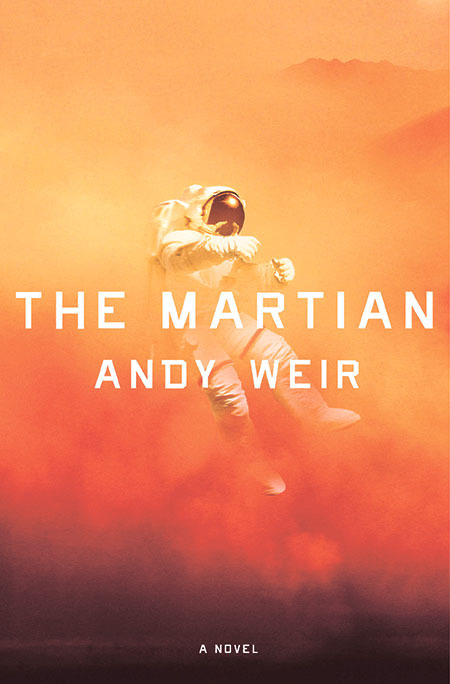
This book is the hardest of the hard sci fi I think I’ve ever read. Every single aspect of it is minutely researched and calculated. The author literally wrote equations to write this book. The science is insanely impressive and yet...it never loses its sense of humor or humanity in the mix. In fact, they’re the thing that drives the entire story.
Warlock Holmes - G. S. Denning
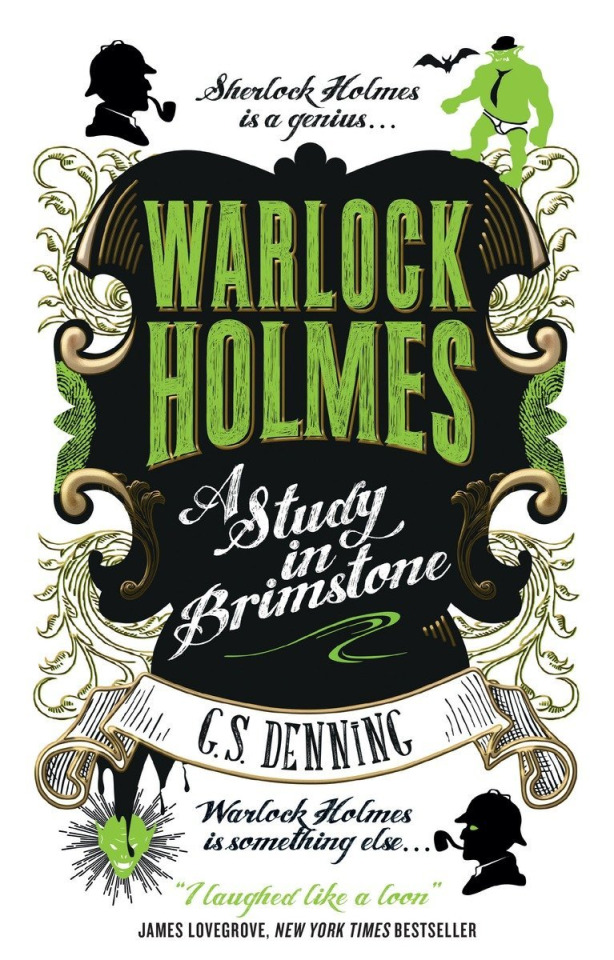
Way early in the year I was strolling down the fantasy aisle at the library, when this cover caught my eye. I took one look at it, went “oh, this looks silly” and...proceeded to devour the entire series in a matter of weeks.
It is very silly. Especially when it’s pointing out something that was silly in the original. There’s something so satisfying about Watson immediately answering Holmes with the correct number of steps in their flat when he’s trying to make his point about how most people don’t pay attention to things like that.
World War Z - Max Brooks
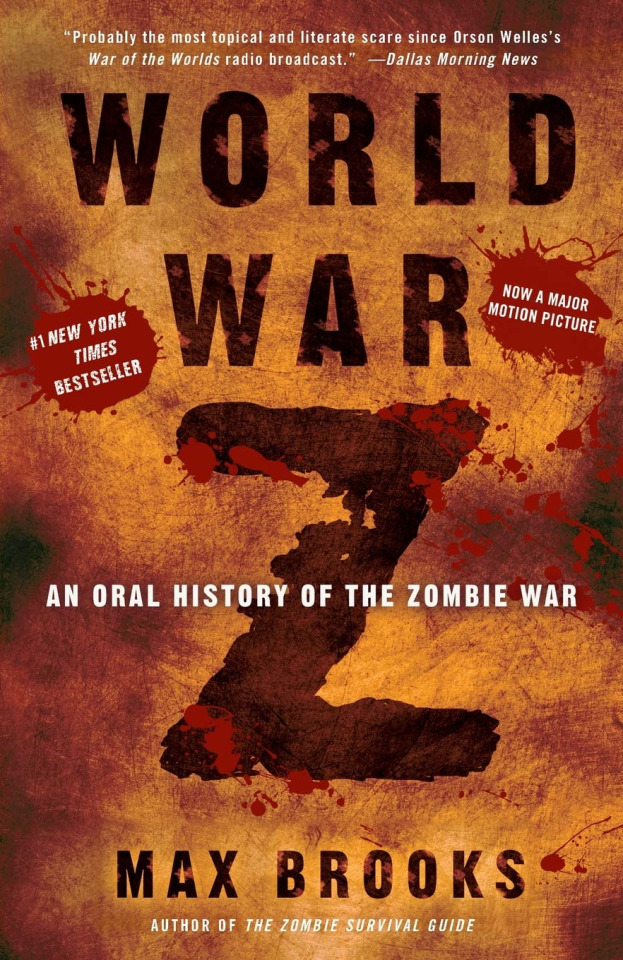
Every single scenario in here could easily support an entire book. A park ranger whose job it is to contain the yearly zombie spring thaw? HECK YES. I’d read tens of thousands of words about that. A Chinese admiral who defaults, steals the government’s premier submarine, loads it up with the families of his underlings and takes to the sea for years to live in the maritime economy that has sprung up in a world where everyone is trying to escape the shore? That could be an entire movie on its own.
Every chapter was more creative than the last and as a huge worldbuilding fan, this book was so, so fun.
An Unkindness of Ghosts - Rivers Solomon
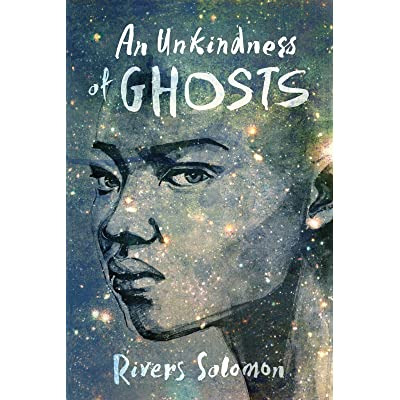
In which a queer, neurodivergent protagonist solves a mystery on a spaceship which is a microcosm of antebellum era politics! This had a beautiful, mysterious, wonder-inducing writing style and it was a joy to peer into the wildly differing minds of every single character.
Books - Nonfiction
Underland - Robert MacFarlane
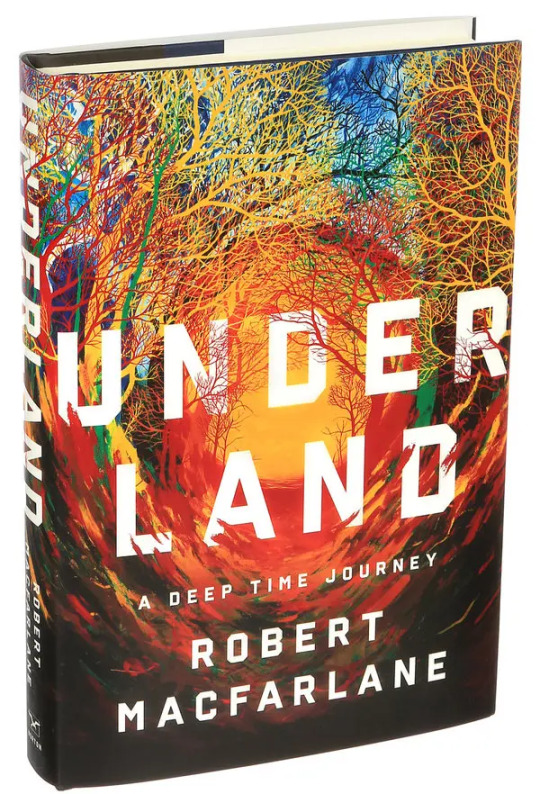
In every chapter, the author visits a different hole. Basically.
It’s an exploration of caves, catacombs, mines, nuclear waste facilities and the hidden underbelly of every forest. It was fascinating. And fundamentally changed how I look at time.
Rejected Princesses - Jason Porath
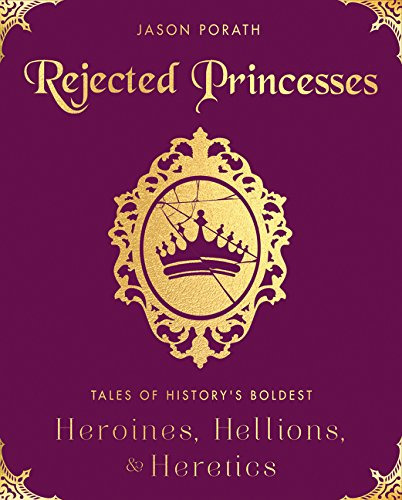
After years of having enjoyed the web entries, I finally got my hands on the first book and was not disappointed.
There are the more entertaining entries, of course and the art is as charming as always, but what struck me the most were the more difficult stories. The deeper you go into this book, the more horrific it gets. The author does not hold back on the indignities suffered by the historical figures he writes about. It’s terrible...but also very, very illuminating.
The Gift of Fear - Gavin De Becker
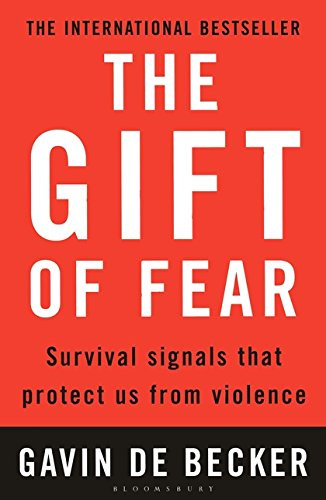
This book - while maintaining all the essential information in it - could be pared down to one sentence in a sea of blank pages and that sentence would be: trust your instincts. End of story.
But in a world where instincts are either customarily suppressed or going haywire, it’s not quite that easy, which is why I’m glad there is more to the book.
I picked it up thinking “ha ha, betcha can’t help a person with anxiety who fears all the time already” and...what it actually ended up doing was giving me the tools to differentiate between real fear and unfounded fear. And did help with the anxiety quite a bit.
Fanfiction
Watch Over Me - cakeisatruth
A Bioshock fic from the point of view of a little sister who is learning how to trust and be an ordinary child again. Dark and sweet. An excellent combo.
All That is Visible - Ultima_Thule
An exploration of a minor character in a well researched historical context? That’s my jam! How did they know?? A Tron fic about what it’s like to be a female programmer in the 70s.
Graphic Novels
The Adventure Zone - McElroys + Carey Pietsch
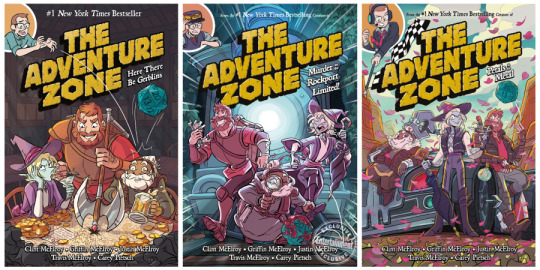
Yesssssssss! It was a running-to-the-library type event whenever my library got a new volume in. The jokes are so good, the art is so lively and the ways in which they added the details that the podcast couldn’t necessarily get across is *mwah*
Trail of Blood - Shuuzou Oshimi
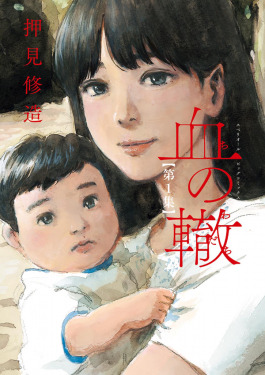
Hoooooooly shit, the art style of this one!! It’s beautifully detailed and expressive, sure, but the real draw for me was how it changes with the emotional state of the main character. There’s this sequence in which he’s consumed with anxiety at school and all of his classmates become blurry and unfocused, until they can’t be recognized as humans at all, that particularly sticks with me.
It’s a horror story about a kid who witnesses his loving mother push his cousin off a cliff for seemingly no reason and is then obligated by her to keep the secret, which is eating him from the inside out. It’s so good, guys, please read it.
Level Up - Gene Lien Yang/Thien Pham
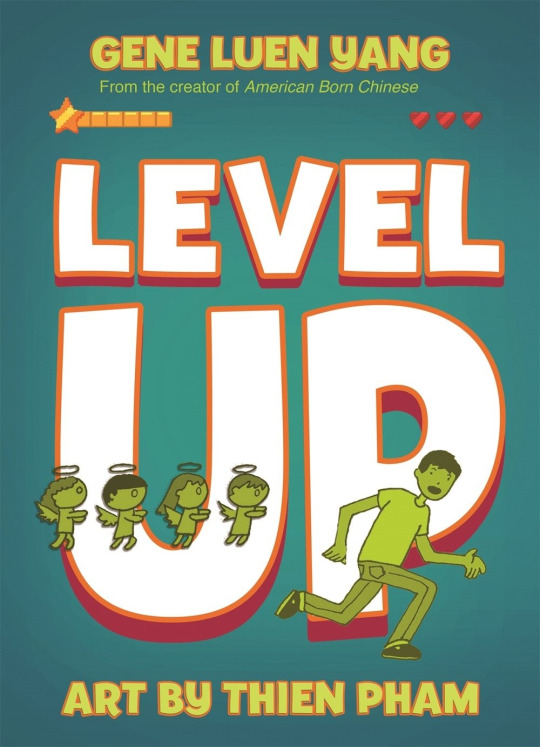
A story about a kid who is haunted by his late father’s desire for him to become a gastroenterologist. It’s funny and touching and the ending gave me what I can only describe as a feeling of exhilaration. Y’know that feeling when something unexpected but not out of left field, perfectly in tune with the narrative arc and gut bustingly funny happens, all in the same panel? That one.
Film
Searching
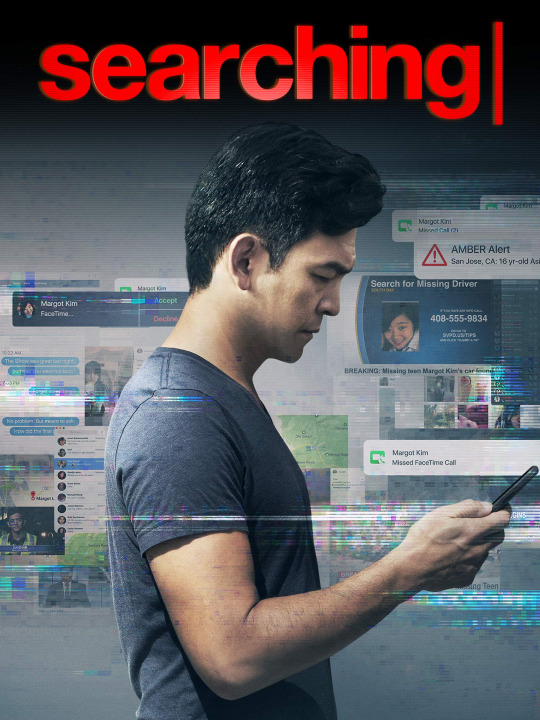
This is a fairly standard thriller about a dad trying to find out what happened to his missing daughter. It’s also found footage...but not in the usual way, which was what made it so compelling to me. It’s told through the dad’s phone calls, google searches, social media interactions, news footage, security cameras and webcams. It was such a cool way to tell a story.
Train to Busan
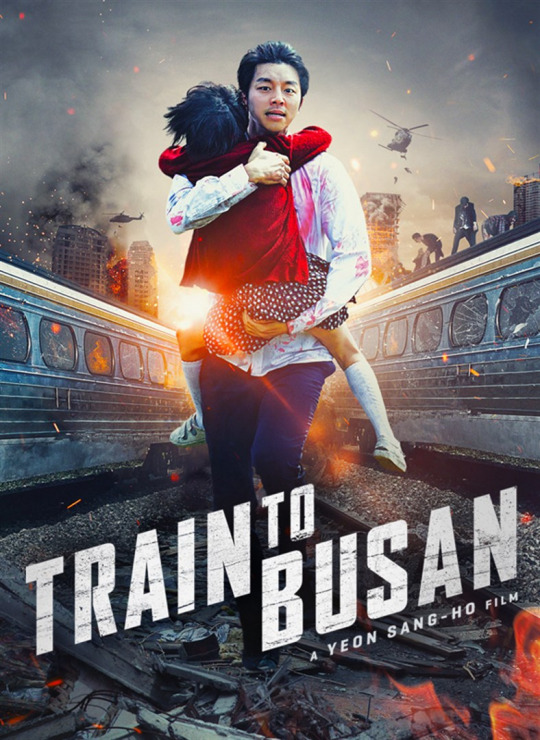
There’s a lot that’s already been said about this movie and I don’t think there’s much more I can meaningfully add to that. Suffice to say that ya gotta take care of each other if you’re going to survive a zombie apocalypse!!
TV Series
My Brother’s Husband
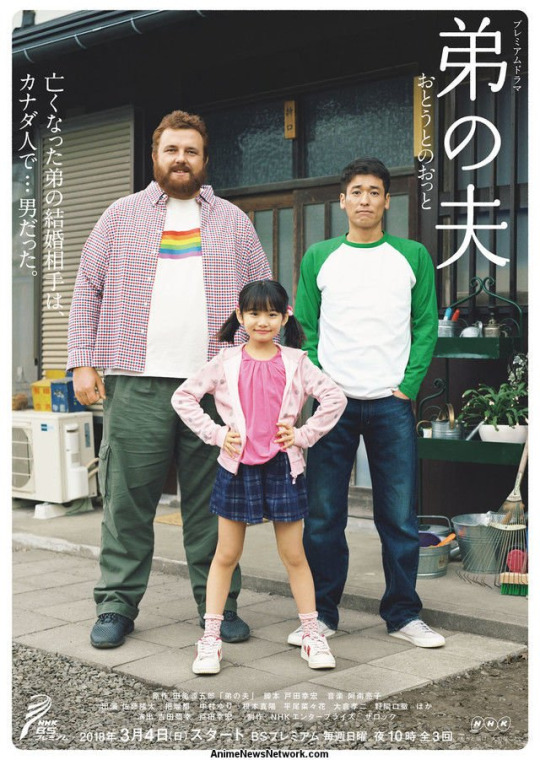
As close to a perfect adaptation as a person can get (barring the entire conversation in English which was...oof). I was so happy when they took it a step further and showed Kana and Yaichi actually getting to meet Mike’s family.
Zumbo’s Just Desserts

I watched a lot of baking shows this year. Like...a lot. They were my much-needed comfort viewing for the year and this one was my favorite, even over The Great British Baking Show (which I LOVE). Why? Because the pastry chef for whom it’s named makes such bizarre and wonderful desserts and fosters an environment in which the competitors do the same. I’ve never seen anything like a lot of the desserts that make an appearance on this show. Every single episode was an awesome surprise and so help me, this show had better get a third season.
She-ra and the Princesses of Power

There’s also a lot that’s been said about this one, so I won’t say much more. Suffice to say: DAMN. That’s how you do an 80s toy tie-in cartoon remake.
Infinity Train
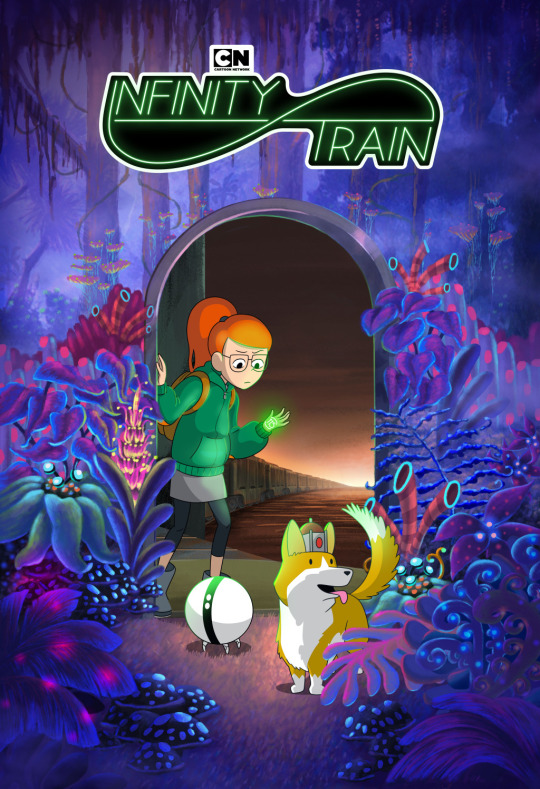
This show’s premise is probably the most unique I’ve seen in recent years. Its balance of comedy, horror and existential dread is also *mwah* I also love how much it trusts the viewer to figure things out on their own.
Primal
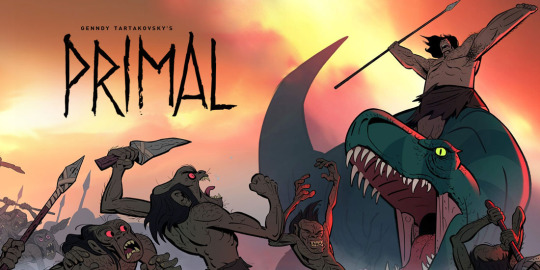
A late entry sliding in before the year ends! I finally got to watch the second half of the first season last weekend and it was EXCELLENT. The pacing, the brutal fight scenes, the adorable dinosaur antics, the animation, the quiet moments - *mwah-mwah-mwah-mwah-mwah*
The most emotional moment for me was the part in which the protagonists watch, with sorrow, as the rabid dinosaur who’s been trying to kill them all night dies an excruciating death.
Also it sets up a fascinating new plotline right before ending in a cliffhanger!! Another one for the ‘had better get a next season’ list.
Games
Night in the Woods
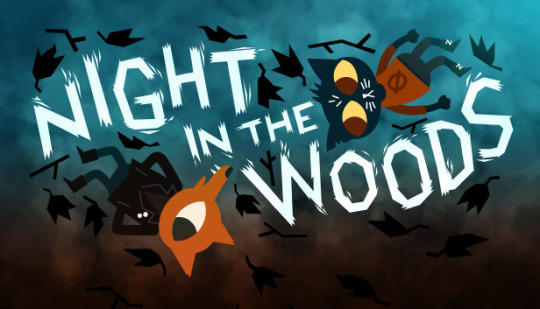
This is one that’s been on my to play list for a few years and I was so glad I finally got my hands on it. It’s like...The Millennial Experience (TM), the game. I felt so seen, playing it. The character writing was fantastic.
Prey
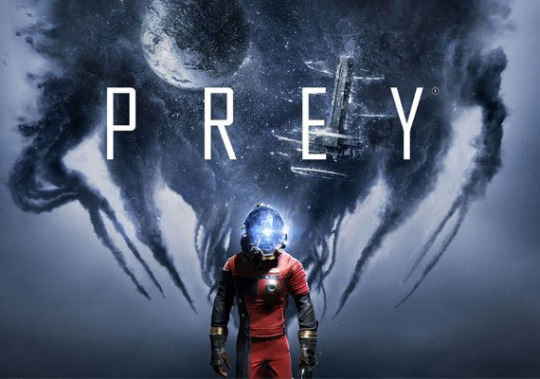
I don’t know why I put off finishing this for so long. I guess I wasn’t in the right alien killing headspace for a while?? Anyway, the setting is gorgeous, the alien biology is weird and cool, the ethics are delightfully murky and the interconnectedness of the station was really cool, especially in the OH SHIT moments at the end.
Podcasts
The Adventure Zone
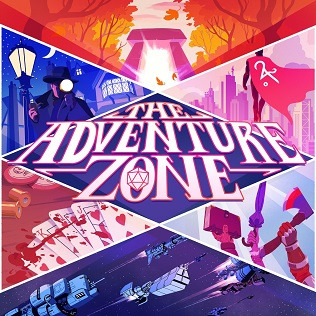
I tried to narrow this down to one favorite arc, but found that I couldn’t do it. I love Balance for its comedy and creative energy. I love Amnesty for its drama and acting. I am loving Graduation for the depth of its world and the way in which the real story behind everything that’s happened is slowly unfurling. It’s a good podcast all around.
The Magnus Archives
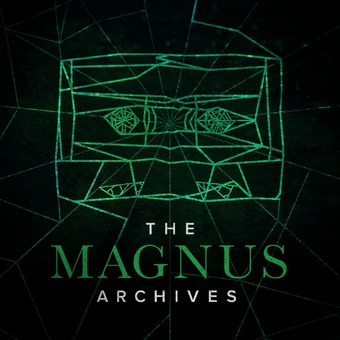
Who obsessively listened to every single season while playing Minecraft in about a month? Surely not me, nooooo. Of course not.
There’s also been a lot said on this one, so I’ll keep it brief. I’ve seen things in here that I haven’t really seen elsewhere in horror. My particular favorites were the creepy psychiatric hospital in which the horror comes not from the patients, but from the denial of the doctor to believe them about their mental illnesses and every single thing related to the Anthropocene. The one with the Amazonian village made out of trash - CHILLS.
#tma#taz#prey 2017#night in the woods#infinity train#warlock holmes#she-ra#zumbo's just desserts#a thought
10 notes
·
View notes
Text
Which Format Should I Choose To Publish My Book?
#ReturnToRealBooks

Photo by Anastasiia Ostapovych on Unsplash
Good for you!!
You’ve worked hard; devoted months (years?) of your life; written until smoke poured from the page; read through; rewritten; proofread and finally closed your laptop; you have finished your book! Congratulations.
Assuming you have had the book copy-edited and proofread (if you haven’t, close this blog page right now and visit our Editorial Services, because you’re not ready to publish your book!), you are now faced with a decision. Before we come to the subject of the blog, and how your choice of target reader directly affects the book’s most suitable format, there is a decision you need to make now, if you have not already done so – one which you need to think long and hard about:
SHOULD I SELF-PUBLISH OR TRADITIONALLY PUBLISH MY BOOK?
There are probably thousands of blogs and webpages on this very subject, and all will give you the same message; none can make this decision for you. The decision to self-publish or traditionally-publish is a very personal one, and all anyone can do is advise you of the implications of making either choice.
Of course, the first factor in the self-pub or trad-pub decision is out of your hands: are you even going to get an offer? How long are you willing to wait for an offer, before admitting that you may need to take the reins yourself? Is it such an ambition that you will settle for nothing less than a publisher’s contract, even if it takes your whole life? In episode 4 of my podcast series “Fiction Writing Basics: Preparing to Publish”, there is a lot of advice about how you should choose and approach publishers with your book, including how to create and present your synopsis; whether you should use an agent; whether you should put your faith in small indie publishers; but of course this is all advice aimed at those making the decision to traditionally publish. Assuming you have the choice, or you are planning on trying one option for a while before pursuing the other (don’t self-publish the title if you are hoping for a publisher deal for it!), that is a decision which really comes down to personal preference, ambition and model.
Authors choose to self-publish for numerous reasons, but if we are being completely candid, they are most commonly the following:
1. They have been unable to gain representation and have given up trying to do so;
2. They haven’t the nerve, stomach or time to pursue a publisher’s deal;
3. They want to retain full control of their book, its rights and its royalties.
The first two of those reasons no-one can really help you with; they are between you and yourself, but reason number 3 is one that I personally like a lot, as an advocate and professional of the self-publishing industry. Full control is not to be understated, and it is a major benefit of self-publishing. Even famous authors often choose the model, for this very reason (Charles Dickens, by then already hugely successful as an author, chose to self-publish A Christmas Carol, which went on to become undoubtedly his most successful book).
Bear in mind, there are a few general factors which may affect your ability to gain a traditional publishing deal as a matter of standard:
· If your book has already been previously self-published, it is very unlikely to gain representation;
· Many publishers – particularly larger ones – will only accept submissions from an agent;
· Publishers - and particularly agents – may only be willing to take a chance on known authors or currently trending subjects;
· If your book is a short story or novella, it is less likely to be appealing to a publisher.
For these reasons, and others, smaller publishing houses and imprints are often deemed more desirable and approachable to authors. But – hugely importantly – if you choose to support a small publisher (and, good for you if you do), ensure that they have the financial means to promote and sell your book, before signing away its rights.
If you can get a publisher, their job – in a very small nutshell – is to sell your book, plain and simple, meaning that you don’t have to (with the exception, of course, of whatever promotional puppetry they write into your contract). With traditional publishing, you don’t have to spend your own money advertising, and every spare moment marketing and maintaining a virtually permanent social media presence – though, of course, you can if you want to. When self-publishing, however, you do have to do all of these things, and more still. You can try to distribute the titles, but the big distributors (Ingram Spark and Gardners) will require your book to be published under an imprint, so you will need to create one. You can choose to self-publish and outsource all of your sales and marketing, but this is very expensive and time-consuming business.
But, if you manage to get all of this right, the benefits of self-publishing are big: you keep all of the rights and all of the royalties – these are not insignificant factors by any means, when considering that after taking out production, marketing and commission costs, you’re lucky if publishers will pay you between 10-15% royalties on net sales – this applies even if they choose to slash your book’s cover price for pound-shop retail – and there is nothing you can do about it. When self-publishing, you can change the marketing plan; you have control over T.V rights and sequels; plainly put, publishers don’t make the decisions about your book’s future – you do.
PRINTED BOOKS VS. E-BOOKS VS. AUDIOBOOKS
E-books have become extremely popular in the past 12 years, since the birth of the Kindle, and the recent rise in audiobooks has been arguably more formidable. But, printed books have still held off the challenge, and remain the most popular way to read, accounting for two-thirds of all books read in the U.S. in 2018 (Pew Research); whilst e-book sales are reportedly falling, audible books are on the rise (I explore the reasons for this in the blog: “Is Seeing Your Book In Print Every Author’s Dream?”). So, which of these formats should you publish your book in?
Of course, this question is only relevant to those of you choosing to self-publish: traditional publishers will make this decision themselves. A likely response to the question will be: preferably I’d publish in all of them; print, e-book and audiobook. While that sounds nice in theory, is it feasible? An immediate factor which springs to mind is cost: creating e-books is generally free, or very inexpensive, and doesn’t take very long for those with the know-how; printed books are, of course, more expensive to produce – an ISBN will be required, unless you are publishing through KDP or another platform which will provide one for free. Granted, unless you purchase a print run, your published book will be a print-on-demand model, meaning that you don’t get charged for its creation, which is instead incorporated into the cover price. However, factors like imagery, type of paper, hard or soft cover and size will all affect its retail price – quite dramatically, too. Amazon is notoriously greedy when it comes to their costs and royalties, and you may find when publishing on their KDP platform that you have to charge a much higher cover price than you and your readers would like, just to cover the costs; in other words, your book can be very expensive and you still might not make a penny! Audiobooks, too, are expensive to produce – perhaps in the thousands! The reason for this is obvious: you’re paying hours and hours of its narrator’s wages, unless of course you choose to record the audiobook in your own voice, as many celebrities do. There is also a certain amount of technical knowledge and equipment required to record a book of anywhere near good enough quality for the market.
Suddenly, the choice of format doesn’t seem such a flippant one, and requires careful consideration. But, don’t be tempted to just rush out and publish in the cheapest format, either: it may be totally unsuitable for your book.
THINGS TO CONSIDER WHEN CHOOSING YOUR BOOK’S BEST FORMAT
Generally speaking, there are three primary elements to consider when choosing your book’s best format: the target audience, the genre and the narrative.
Starting with the latter, there are two clear ways in which narrative affects its most suitable format: the first may seem a touch obtuse, but it is worth a mention anyway: that a book with vast swathes of dialogue and little action or scene-establishment may reveal a frustrated playwright – in this case, would your book present better as a screenplay than a novel? The second implication of narrative is in the story itself: it may lack depth in its story arc, so much so that the most which can be realistically eked out of its quality is a short story or novella. E-books and audiobooks are ideal formats for short books – the latter becoming cheaper to produce, whilst with e-books you can charge pennies for a title and still make a royalty. By contrast, the production costs of a printed book of your short story or novella may make its cover price disproportionately expensive, and not good value for money. Short stories are great for commutes and lunch breaks, which also makes them ideal for digital formats.
This example highlights how the audience for your book becomes a factor in its suitable format. The most important variable to consider of your target reader is how he or she is reading this particular title: on the commute; in bed; in the park; in their coffee break? This variable is what also ties genre directly into the format debate. For example, consider that you are reading a rather racy book about bondage, with a full-colour printed cover – probably not something you want to be doing on a rush-hour bus; if you are studying music or algebra, you probably wouldn’t choose to do so in a bustling staff canteen during a 10-minute coffee break. Knowing your target’s preferred reading habits should give you a clearer understanding of which is the most suitable format for them to enjoy your book. Commuters and those who like to read in public will likely prefer something portable, such as an e-book, an audiobook or an 8-inch paperback; they are unlikely to be happy lugging about a 12-inch hardback, 3-inches thick. Those looking to be educated may expect to see high-resolution imagery, which means glossy paper and large pages – of course, making the book much more expensive; this presents a clear indicator of how genre becomes directly correlated to target reader, and in turn to best format. Educational books – such as nature and historical - may have incurred considerable expenses in their research and compilation, so a higher cover price is justified and expected, as are a hard cover, glossy paper and high-quality images. By contrast, certain genres of fiction, such as the more light-hearted ones – chick-lit and action, perhaps – are more likely than others to be read in public, if only because of the lesser concentration required. Therefore, they need to be portable: again, e-books, audiobooks and 8-inch paperbacks, etc. Shorter chapters may also be appropriate, for short breaks and commutes. Another big consideration in fiction is that it is devoured at a greater rate and bought more impulsively, so readers expect it to be affordable.

Photo by Igor Rodrigues on Unsplash
To summarize, different genres will always elicit different expectations in the reader. When choosing a suitable format for your book, you should always consider the genre, in conjunction with the following factors: is portability required; is discretion required; is concentration required; is imagery featured, in which case digital formats and matte paper may be completely unsuitable. For a much more comprehensive breakdown of how reader demographics and specific genres correlate with best book formats, I highly recommend that you listen to lesson 1 of my podcast “Fiction Writing Basics: Purpose and Best Format”.
Posted by Matt McAvoy: 31st Aug 2019
#self publishing#publishing#authors#podcast course#writing course#writing fiction#traditional publishing#ebooks#audiobooks#books formatting#fiction#genre
0 notes
Text
Scientists 'tantalised' by draining every hydropower dam in the US for solar panels
https://sciencespies.com/environment/scientists-tantalised-by-draining-every-hydropower-dam-in-the-us-for-solar-panels/
Scientists 'tantalised' by draining every hydropower dam in the US for solar panels
If all the hydro-power dams in the United States were removed and replaced with solar panels, it would take up a fraction of the land and produce substantially more electricity, according to a new analysis.
The idea is ambitious, and for now, it’s really just a thought experiment. Today, hydropower is a significant source of renewable energy in the US, accounting for roughly six percent of the country’s total electricity output.
Removing all 2,603 hydro dams in America would leave a huge energy void behind, but it could also provide room for greener opportunities.
While it’s true that hydropower dams are a renewable source of energy, they still produce large amounts of greenhouse gases and can be environmentally destructive and costly to maintain in the long term.
In recent years, these criticisms have led to a growing dam removal movement. And although it’s theoretical, a massive investment in solar power might be able to cushion that loss.
To cover for all the hydro dams currently in use, scientists estimate we would need nearly 530,000 hectares of photovoltaics (PV). While this sounds like a lot, it’s a “surprisingly modest” amount compared to the combined size of most reservoirs, which cover nearly 4 million hectares nationwide.
In fact, the new analysis suggests that substitute solar panels could match the total energy output from hydro dams while using just 13 percent of the same land.
“I think that’s pretty astonishing and tantalising too,” John Waldman, an aquatic conservation biologist from the City University of New York, told Carbon Brief.
“I’m hoping this presents a different mindset for people who think about our energy futures.”
The potential land sitting under reservoirs right now is immense, and if only 50 percent of that surface is drained and used for solar panels, it could greatly improve energy efficiency, producing nearly three-and-a-half times the amount of energy hydropower currently generates.
Even in a more conservative hypothetical, where only a quarter of that drained land is used for solar farms, Waldman and his colleagues calculate energy production could increase 1.7 fold.
In some states, this has the potential to free up huge swathes of land for other purposes, including wildlife habitat, recreation, and agriculture. In Florida, for instance, scientists calculated a solar farm the size of New York’s Central Park (341 hectares) could replace 26,520 hectares of the state’s hydro dams.
The new analysis focused on solar power because it is easily scalable, but the authors argue the same logic can also be applied to wind power on a reservoir’s surrounding ridges and hydrokinetic turbines in a newly-flowing river.
“Also, potentially expensive and difficult-to-permit electrical lines that transmitted the hydropower already exist at these locations and could potentially be repurposed to carry electricity from alternative sources,” the authors argue.
Using existing infrastructure, Waldman ultimately hopes to create an “energy park” in these reservoirs that he says will be “more resilient and more productive than hydropower alone”.
The cost of this major transition is not evaluated in the new analysis, and in all likelihood the price would fluctuate quite dramatically depending on the particular hydropower site.
But there’s also a cost to hydropower that is rarely considered, especially in the developing world where the technology is taking off. Hydro dams can not only disrupt river ecology, they can also lead to deforestation, a loss of biodiversity, substantial emissions, the displacement of thousands of people, and harms to nearby food and water quality.
Of course, dam removal also needs to be assessed in terms of potential damage to the local ecosystem or even unanticipated downstream impacts, although generally the effect of river restoration has been positive.
The authors of the new analysis admit that their calculations are not exactly “realistic” and their hypothetical is more about potential than anything else. Nowadays, we still can’t figure out how to efficiently store and deploy vast amounts of solar power when we need it, so battery storage would need to improve for this idea to come to fruition.
Nevertheless, solar technology is moving quick and Waldman and his colleagues see this as an important avenue to explore in the coming years. So far, most of the dams that have closed down in the US do not produce electricity, and in many ways, that’s because we don’t have another alternative.
“Today, recognition of decades of unsuccessful restorations predicated on engineered fishways, the rapid ageing of our dams and the inevitable need for their removal for safety reasons in the years ahead, and the advent of other, increasingly cost-effective forms of alternative energy all suggest that there is a way to both reopen our rivers and to replace the energy production they so long provided,” Waldman argues in an accompanying editorial.
If solar technology can meet the demands of the 21st century, it could provide considerable environmental and ecological benefits, especially when compared to hydropower. Even better, it has the potential to do this without sacrificing our current energy output.
“The thought experiment proposed by Waldman and colleagues is provocative and contributes to outside-the-box thinking about how society can address pressing issues surrounding freshwater sustainability and energy use,” writes political scientist Jeffrey Dudas in a review of the study.
“However, the next steps will be immensely more complex and require additional, more nuanced analyses and technological innovation to help strike the right balance.”
Waldman’s hypothetical may be extreme, but so are the times we live in.
The findings were published in Nature Sustainability.
#Environment
0 notes